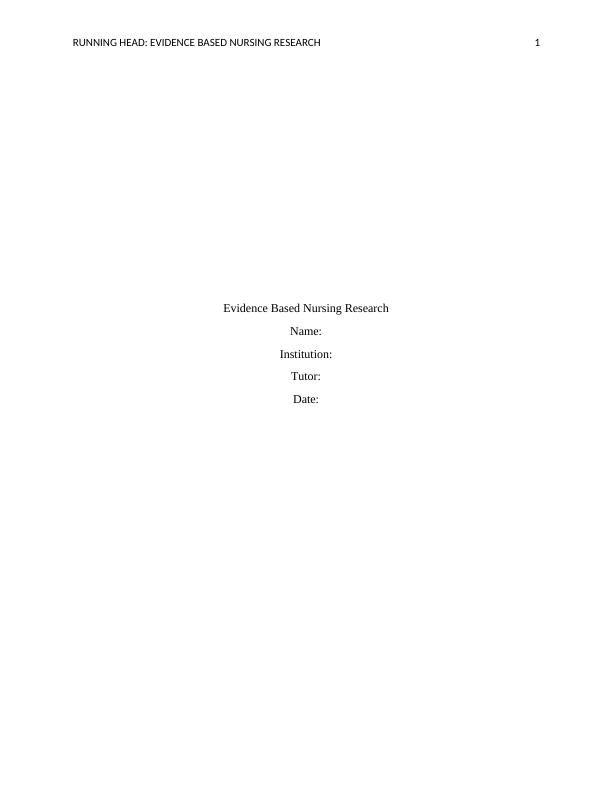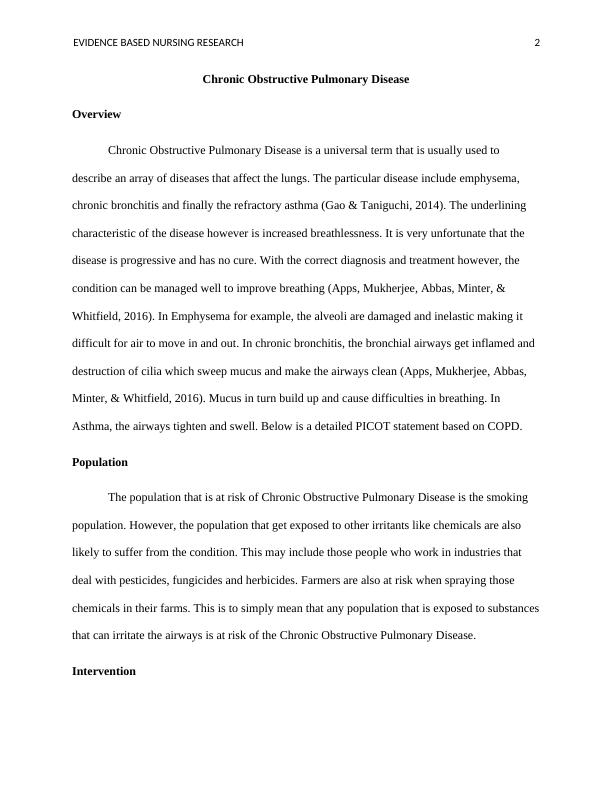Chronic Obstructive Pulmonary Disease: Evidence Based Nursing Research
This project focuses on reducing the rate of re-hospitalization in home healthcare patients by implementing preventive initiatives such as patient seminars and close monitoring of high-risk patients.
5 Pages1151 Words102 Views
Added on 2023-06-11
About This Document
This article discusses Chronic Obstructive Pulmonary Disease (COPD) and its management through evidence based nursing research. It covers the population at risk, interventions, comparisons, expected outcomes and time frame.
Chronic Obstructive Pulmonary Disease: Evidence Based Nursing Research
This project focuses on reducing the rate of re-hospitalization in home healthcare patients by implementing preventive initiatives such as patient seminars and close monitoring of high-risk patients.
Added on 2023-06-11
ShareRelated Documents
End of preview
Want to access all the pages? Upload your documents or become a member.
Reducing the Rate of Re-hospitalization in Home Healthcare Patients
|11
|2675
|104
Chronic Obstructive Pulmonary Disease Essay
|12
|2476
|154
Social Political & Environmental Issues in International Healthcare
|11
|4026
|342
Pathophysiology of COPD, Acute Exacerbation, Pneumonia, and Interventions for COPD Management
|10
|2873
|82
Chronic Obstructive Pulmonary Disease: Anatomy, Physiology, Etiology, Symptoms, Investigations, Treatment and Management
|14
|3622
|302
Clinical Decision-Making base on Case Study
|15
|4479
|16


